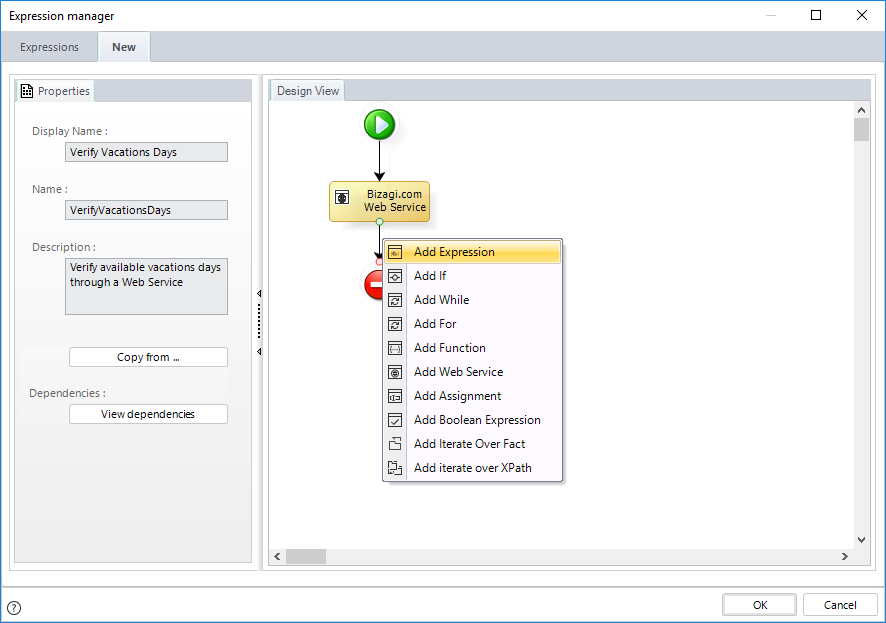Bizagi Functions
Overview
Business rules are an important component of your intelligent process automation. They are used in several elements of a process and help you to control the business logic. In Bizagi, you can automate any process, whether it is structured, unstructured, complex, or simple. Therefore, Bizagi Studio provides a full set of functions and expressions available to fulfill your business requirements.
It is important to recognize the source of the information you are using in a business rule and what you intend to do in the rule. Identifying this beforehand helps you to look up the right function that fulfills any of your requirements.
There are four categories, or purposes, for functions or expressions:

Data Model
These expressions are used to get, set, or obtain information based on attributes held within entities that are part of a data model. The access method is through XPaths, which let you navigate through the relationships at different levels. For example, using these expressions, you can get the client associated with a purchase. Refer to XPaths functions.
Non-Related Entities or Parameter Entities
These functions let you consult values of entities not found through XPaths, meaning they are not related within the data model. In this category, you can also find functions to iterate or get information from parameter entities. For example, you can get the Area Code of a Country registered in a parameter entity. Refer to Access entities not related to the data model.
Case or Task
This set of functions is built to obtain information related to a case or a task in expressions. For example, if you need to get the case creator or the estimated duration of a task. These functions are usually preceded by the object Me, which provides context for where the expression is located. That is, Bizagi knows the process, case, and task where the expression is executed, and therefore can query any of the contextualized information. Refer to Me object.
Non-Contextualized
Using these functions, you can manipulate variables in expressions. For example, you can calculate values using math expressions, manipulate files, operate on dates, or get information that cannot be obtained from XPaths or the Me object, that is, non-contextualized information. Refer to CHelper.